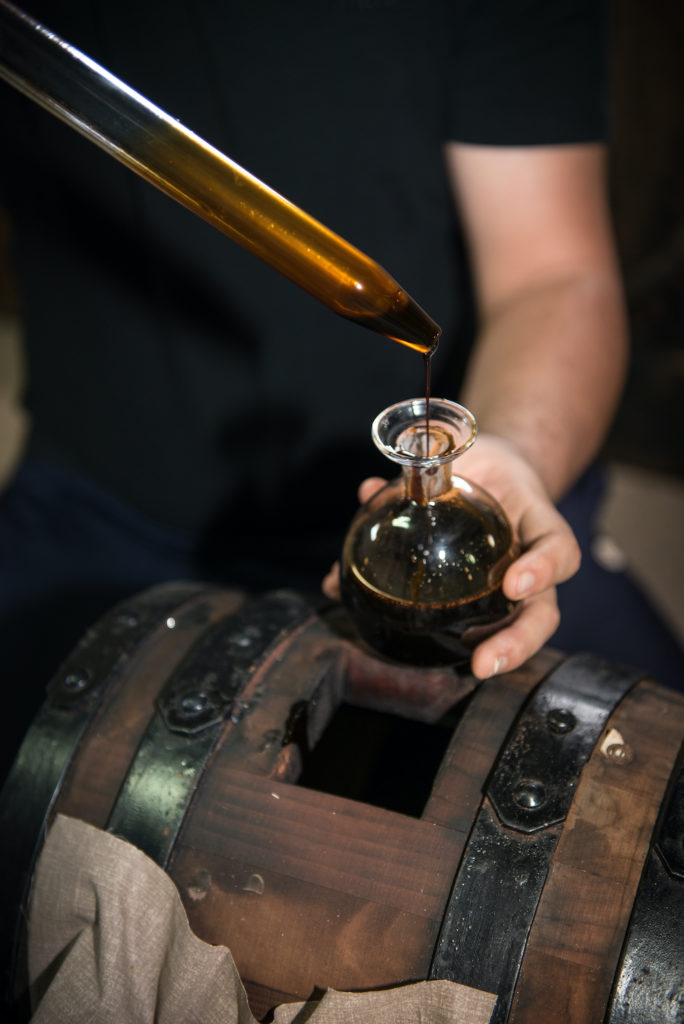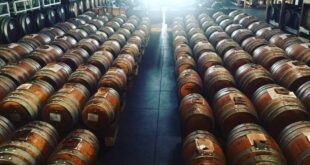Balsamic Vinegar alternatives: don’t exist. Traditional Balsamic Vinegar of Modena PDO is a unique product and it is not possible to compare it with other alternative products. It is composed only of one ingredient, the cooked must, but its complex structure and organoleptic nuances are carefully observed and evaluated.
A group of Master Tasters carefully analyze every product (a real sensorial analysis).
The tasters attribute a score to the visual, olfactory and gustatory characteristics by filling in the product evaluation form. To do this operation is important that the tasters use a common vocabulary. They have established which characteristics evaluate and which adjectives use that describes the Balsamic unequivocally. A perfect interpretative code.
We suggest you print a copy of the evaluation form to better understand how the tasters use it.
https://usebalsamicvinegar.com/category/traditional-balsamic-vinegar-of-modena-dop/
Identify what are the characteristics that the tasters observe and what describe the common adjectives that they use during the gustatory analysis will help you to better understand that Balsamic alternatives: don’t exist.
To make the samples, the tasters use a ceramic spoon because this material does not transmit any flavour and do not alter the taste of the product.
Balsamic Vinegar alternatives: don’t exist- taste aspects
Fullness
The tasters evaluate this characteristic as the whole and richness of the product. All the components of Balsamic Vinegar (acids, mineral salts, tannins, sugars) create the complexity of the Traditional.
Fullness is not synonymous with density. For this reason, a Balsamic Vinegar with a good level of fullness may be slightly dense.
- DENSE – the various components of Balsamic are perceived in a remarkable way and with a high level of richness and balance. The result is a dense Traditional.
- CONSISTENT – it presents itself with a good grade of acceptability, even if it does not reach the optimal level, it is however already dense.
- MODERATE – the components of the Traditional are still creating, but they are insufficient to leave a secure trace. They consider it a discreet product.
- LIMITED – often because of the presence of only acetic components. The aftertaste is barely noticeable.
- LACKING – the sensation of tasting is insufficient or lacking (present only in a very rapid time interval). It is only cooked must taste.
Intensity
The meaning is the same as the Olfactory analysis. Intensity is an easy property to evaluate because it represents the vigour and strength with which the various components of the Balsamic are manifested.
- WIDE
- PRONOUNCED
- SMALL
- POOR
- MISSING
These are the adjectives that characterize it.
Taste
Identifies the sense of immediate well-being. It is the characteristic that is most affected by the subjectivity of the taster, who could prefer a product tending to sweet rather than acid or vice versa.
- EXQUISITE – all the components express a high degree of completeness and make the product generously full and with velvety nuances following the olfactory characteristics. The result is a Traditional of high calibre.
- VALUABLE – the product presents positive characteristics but is not a total satisfaction. The level is lower than the previous one.
- AGREEABLE – a large group of Traditional Balsamic Vinegar is classified with this adjective. The products do not have defects and the taste is pleasant but still partially lacking in the richness of the organoleptic properties.
- COMMON – rarely used. This adjective is usually attributed to a Balsamic Vinegar where the cooked must have recently completed the alcoholic/acetic fermentation phase (acetified must).

Harmony
Together with fineness, harmony is considered the noble property of Balsamic. It represents the optimal result of the balance that is formed between all the components of the product with particular reference to the complex of sugars and all the acids. Evaluating harmony means expressing a judgment on the typical bittersweet characteristic of Traditional Balsamic Vinegar of Modena.
- RIPE and BLENDED – each component of the product fully fulfils its role in perfect harmony with the others. An excellent balance that has formed over a long period of ageing.
- BALANCED – sweet and acid are recognized in good balance but not perfectly harmonized with each other.
- UNBALANCED – sweet and acid are correctly present in equal proportions but are distinct and unrelated to each other and the harmony is unsatisfactory.
- POOR – when one aspect prevails over the other.
- ABSENT – when only one of the two aspects is perceived.
This is the third article about sensory analysis and the adjectives used. It is easy now to understand that Balsamic vinegar alternatives: don’t exist.
To better understand how to make and analyze Balsamic Vinegar, keep on reading these articles:
LINK VISIVI
LINK OLFATTIVI
Stay tuned and don’t miss the next article! We will talk about other incredible curiosities on how to taste and evaluate the Traditional Balsamic Vinegar of Modena.
Greetings from Modena.
 Use Balsamic Vinegar All you need to know about Balsamic Vinegar of Modena
Use Balsamic Vinegar All you need to know about Balsamic Vinegar of Modena


